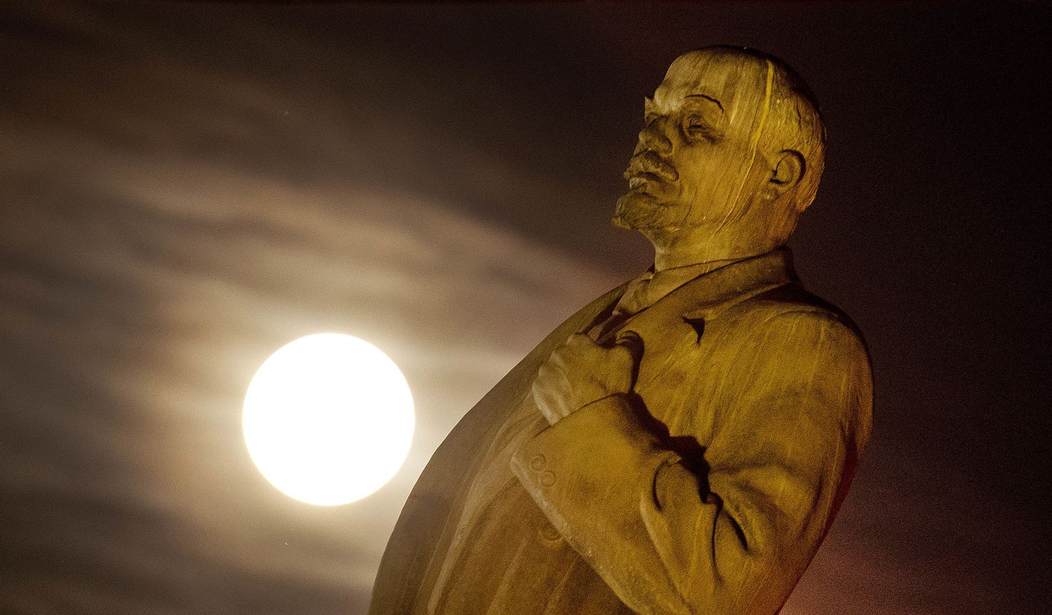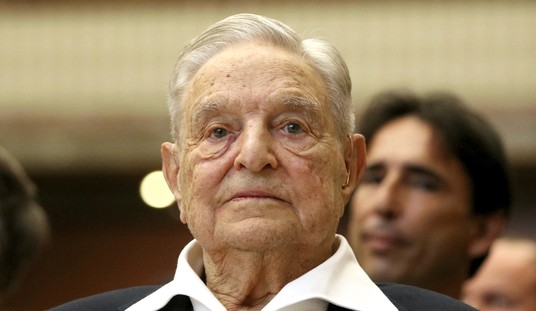All over Moscow, there are still statues of Lenin. A few came down upon the fall of the Soviet Union, but most stayed right where they were. Most Americans who have been aware of this ascribed it to a readiness on the part of contemporary Russia to accept its past, rather than reject and attempt to remake it à la the Antifa/Black Lives Matter statue destroyers in the United States. But a recent incident in Ukraine suggests that there could be much more to it.
CNN reported Friday that “video has emerged from the neighboring region of Kherson — also under Russian occupation — of a statue of former Soviet leader Vladimir Lenin being re-erected in the town of Nova Kakhovka.” The video “captures the statue of the Russian revolutionary and first leader of the Soviet Union being carried flat on a truck through the city. A later photo shows the statue being winched onto a plinth in front of the city council building.”
Ukraine’s Deputy Prime Minister, Mykhailo Fedorov, observed: “While Ukraine is the first in the world to introduce e-passports, ‘orcs,’” that is, Russian forces, “are restoring Lenin’s monument in temporarily occupied Nova Kakhovka.”
The Soviet regime was particularly hated in Ukraine, as it was responsible for the Holodomor, the great famine of 1932 and 1933 in which around five million people died. When the Soviet Union fell, statues of Lenin came down all over Ukraine, more frequently than they were toppled in Russia. But all that was thirty years ago; why would the Russians go out of their way to restore one of them in Ukraine now?
There are several key reasons. One is that while Russia is not a full-fledged Marxist-Leninist state, it never completely repudiated its Soviet period. Vladimir Putin told the Russian people in his 2005 state of the nation address: “First and foremost it is worth acknowledging that the demise of the Soviet Union was the greatest geopolitical catastrophe of the century. As for the Russian people, it became a genuine tragedy. Tens of millions of our fellow citizens and countrymen found themselves beyond the fringes of Russian territory. The epidemic of collapse has spilled over to Russia itself.”
Among those “fellow citizens” who “found themselves beyond the fringes of Russian territory” were the Ukrainians, who established an independent state, as did the other former Soviet republics. That was the “geopolitical catastrophe” to which Putin was referring, and he appears determined to rectify it. That’s why Lenin has reappeared in Nova Kakhovka. The restoration of the Lenin statue is intended to signify the return of the Russian power that imposed Communism on the Ukrainians and is now attempting to bring Ukraine back into the Russian orbit.
Related: Putin’s Failure
Putin does not, however, appear to be as interested in restoring Communism as he is in restoring Russian hegemony over its former Soviet possessions, and so the choice of the Lenin statue is in some ways an odd one. After all, on March 6, the Russian Orthodox Patriarch of Moscow, Kirill, a firm ally of Putin, situated the conflict as Russia’s struggle against the libertine international Left, saying that Russia’s incursion into Ukraine was “a fundamental rejection of the so-called values that are offered today by those who claim world power. Today there is a test for the loyalty to this new world order, a kind of pass to that ‘happy’ world, the world of excess consumption, the world of false ‘freedom.’ Do you know what this test is? The test is very simple and at the same time terrible—it is the Gay Pride parade. The demands on many to hold a gay parade are a test of their loyalty to the new world order; and we know that if people or countries reject these demands, then they do not enter into that world order, they become strangers to it.” Yet in the West, of course, it is the very forces that are pushing Gay Pride and everything that comes with it, including transgender indoctrination of the youngest of children, that would be most welcoming of a statue of Lenin.
Putin and Kirill likely see no contradiction. For them, Lenin is part of Russian history and of the common history Russia shared with Ukraine, and so he is a fitting enough symbol of Russia’s presence in the Ukrainian town. But the mixed messages demonstrate an incoherence at the heart of the Russian incursion. It is as if Putin, Kirill, and others are casting about for some compelling way to justify the war. Unfortunately, the war will continue whether or not they find one.










Join the conversation as a VIP Member